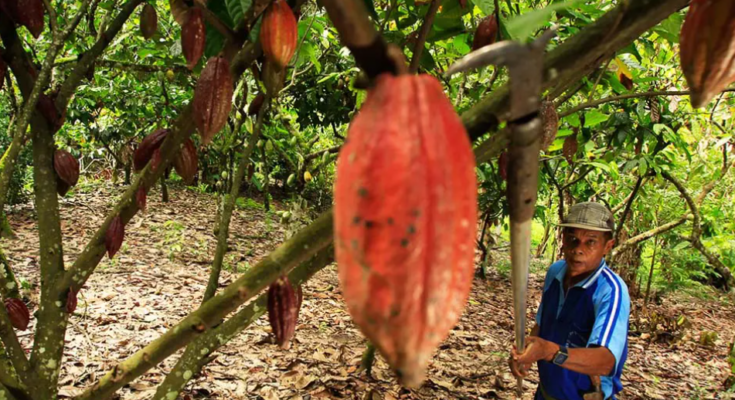Exploring methods for cocoa farmers to manually pollinate their crops could potentially mitigate the crop losses linked to climate change, according to recent research.
Climate change, particularly rising temperatures, has significantly impacted cocoa production in major producing nations like Brazil, Ghana, and Indonesia, where many farmers rely heavily on this crop for their livelihoods.
A study published in Communications Earth & Environment highlights that cocoa yields could plummet by as much as 30 percent in the hottest regions compared to cooler areas, even those just 7 degrees less. Cocoa grows best within a specific temperature range, with an optimal growth temperature around 32 degrees Celsius.
The study suggests that implementing hand pollination techniques could enhance cocoa yields by up to 20 percent. Researchers point to farmers in Sulawesi, Indonesia, where healthy seedlings are being nurtured. The manual pollination of cocoa trees could lead to increased production and help mitigate losses.
Teja Tscharntke, a professor of agroecology at the University of Göttingen in Germany and one of the study’s authors, emphasized to SciDev.Net the uncertainty surrounding which insect species contribute most to pollination success and how best to bolster their populations.
To this end, the researchers propose that innovative hand pollination methods could serve as a viable solution for farmers.
“The research indicates that insufficient pollination is a critical factor limiting cocoa production,” said Prantik Banerjee, assistant professor of environmental science at the School of Basic and Applied Sciences, Adamas University in Kolkata, India, who was not part of the study. He adds that addressing pollination challenges has the potential to significantly boost yields without necessitating the expansion of cultivation areas.
With cocoa being the primary ingredient in chocolate, it serves as a vital cash crop for approximately 5 million smallholder farmers, predominantly located in Africa, Southeast Asia, and Latin America, according to the World Cocoa Foundation. The global chocolate industry is valued at over $100 billion annually, with the top three cocoa-producing countries—Côte d’Ivoire, Ghana, and Indonesia—accounting for around three-quarters of worldwide production.
The study highlighted that revenues generated from cocoa enable farmers to afford essential education, healthcare, and food, contributing significantly to global efforts to eradicate poverty and hunger.
On the flip side, the increasing demand for cocoa has resulted in the expansion of plantations, frequently compromising sustainability and biodiversity in the process.



